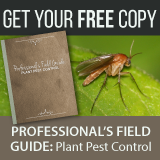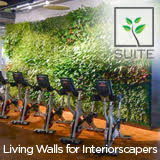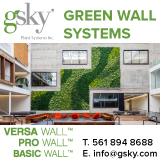

Interiorscape Forum / Scaper Talk Discussion Forum / General Scaper Talk / Large Planters No Drainage
Pages: 1
| Posted: 04 Mar 2014 16:45 Last Edited By: EliEmanuel | |
|
Registered User Currently Offline Join Date: Mar 2014 |
Posts: 1 Reputation: Unranked User Rank: 1 - Seedling 
|
|
I'm planning on installing 2 large rectangular planters indoors and filling them with large topical indoor foliage plants such as schefflera, philodendrons, etc -
The containers have no drainage holes but are very large (4' long x 28" high x 16" wide) I was wondering if the large container size and large plants will be enough to avoid root rot in a drainage-less environment - especially if I water lightly? I'm planning on using coco soil with some bark nuggets in it as the growing medium This way there is no perlite or vermiculite so it woln't hold water nearly as long as conventional indoor potting soil. The bark for the soil I think would add extra aeration / pore space. |
|
| Posted: 07 Mar 2014 03:50 | |
|
Registered User Currently Offline Join Date: Jan 2011 |
Posts: 798 Reputation: 43 User Rank: 10 - Blossom 
|
|
Okay, there's a lot to go over here. First, any container or planter that does not provide for drainage is an accident waiting to happen. My personal preference would be to subirrigate each plant using CWI containers so that there will be no need for drainage in the planter, and each plant can be maintained according to its individual needs and not be lumped in with the watering of the entire planter bed. There are other systems that will work well, such as the old Everlife and Jardinier systems, and you can even assemble a triple-potted setup using a wick-and-platform method for each plant, sinking the no-hole outer containers into the bed and dropping the wicked plants into them.
As for your medium, I'm a big fan of "coco soil" (coconut coir pith), but I advise you to use perlite with it so it has better aeration for your purposes (vermiculite holds a lot of water, perlite does not). Coir has lots of good properties, but aeration isn't one of them, unless you're using a coarse grade of coir. Avoid bark nuggets, especially pine or other easily decomposed bark. It will become a breeding ground for fungus gnats, and it can starve the plants of nitrogen as it breaks down, and will compact and become mushy with age. The triple-potting method (inner grow pot inside a watertight liner slightly larger than the grow pot, all staged inside your planter or larger container) makes it easy to replace plants in the bed without disturbing all the neighbors, and gives you individual control over watering for each plant as I mentioned earlier. It's the best overall method for interiorscape installs, IMHO. Direct-planting is okay, but it subjects each plant to the needs of its neighbors, and so is not the ideal method for most indoor gardens. |
|
| Posted: 30 Apr 2014 22:01 | |
|
Registered User Currently Offline Join Date: Jan 2011 |
Posts: 2 Reputation: 1 User Rank: 1 - Seedling 
|
| For planter installations I like to use rockwool insulation as a filer with large pots placed on foam board insulation squares to stage them. I repot and place the growpot in a liner and set it in place and add layers of insulation. If I need a lot of smaller 8 inch plants, I will place another layer of thin foam insulation at the proper depth on top of the rockwool to stage the smaller plants. If you don't use a support layer, the pots will sink into the rockwool over time. Depending on what you use for a topdressing, you can put moss right on the rockwool or put a layer of thin landscape fabric if using a pebble type finish to cover up the grey. This only works for planters you do not have to walk through. | |
Pages: 1
Interiorscape.com is sponsored by NewPro Containers ![]() RSS 2.0
RSS 2.0 ![]() Atom 1.0
Atom 1.0













